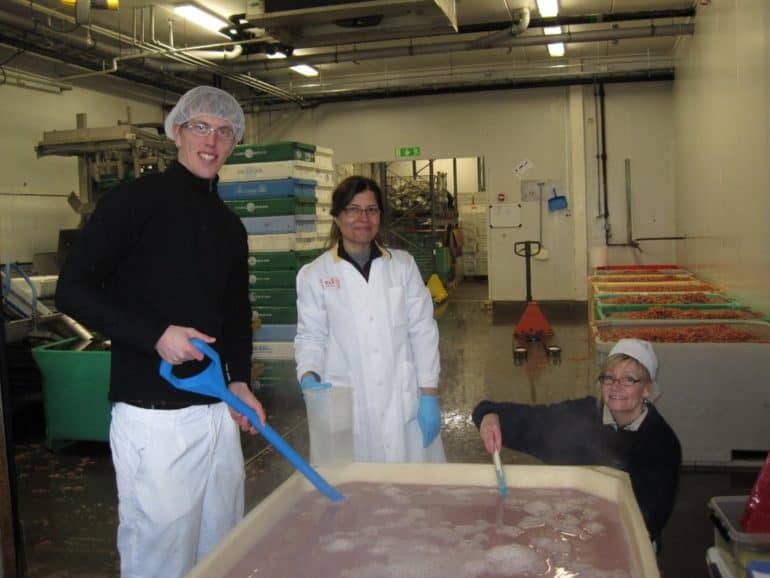Research from the Chalmers University of Technology, Sweden shows that seafood processing water is a valuable source of protein and can play a vital role in fulfilling the world’s growing demand for nutrient-dense food. Seafood processing water is the water fish and seafood are caught, held, and processed in. Many seafood manufacturers currently treat it as waste and dispose of it, which can be costly. An article in the International Journal of Environment and Waste Management reported it can cost fisheries in India between US$500 and US$1,500 per day to treat or dispose of seafood processing water.
This research comes at a time when the global demand for protein is at a record high. A growing population that is expected to reach nearly 10 billion people by 2050, combined with rising income levels in developing countries—making meat more affordable—suggests this demand will continue to increase. According to the U.S. National Institute of Health’s National Library of Medicine, “Overall meat consumption increased by almost 60 percent between 1990 and 2009. This trend is expected to continue, driven in particular by income growth in countries such as Asia, Latin America, and the Middle East.” Current global consumption of protein is 202 million tons for 7.3 billion inhabitants per year. Consumption scenarios project protein consumption by 2050 to range between 264 million and 361 million tons, a 31 percent minimum increase.
The environmental impact of this increasing demand has already been realized on land and in the sea. According to the U.N. Food and Agriculture Organization, “Animal agriculture is responsible for 18 percent of greenhouse gas emissions, more than the combined exhaust from all transportation.” And one pound of beef requires 1,799 gallons of water to produce, creating a large water footprint. The oceans have not been spared with the World Wildlife Federation reporting that “More than 30 percent of the world’s fisheries have been pushed beyond their biological limits and are in need of strict management plans to restore them.” The United Nations Ocean Conference concluded with a global call for action to reverse the decline of the ocean’s health. New sustainable means of producing protein are needed.
One way of producing more protein is to better use current resources. Ingrid Undeland, Professor Deputy of Biology and Biological Engineering, and Bita Forghani Targhi, Post-Doctoral Researcher, Division of Food and Nutrition Science Food at the Chalmers University of Technology, Sweden, are developing a way to extract the protein that leaches from fish into processing water. Undeland told Food Tank, “For pickled herring production, we calculated that 15-20 percent of the fish’s protein leaches into the processing water.” In addition to protein, seafood processing water can be rich in omega-3 fatty acids, minerals, lipids, and antioxidants. This new insight is causing seafood manufacturers to rethink the role this resource can play in their operations, including how it could help them expand their product portfolio and provide a promising new revenue stream.
Undeland told Food Tank, “The extracted resources could replace all salmon feed.” Her team is currently determining if the processing water can be used as a glaze for frozen seafood to prevent oxidation and keep fish fresh longer during transport. In addition, she cultivates different microorganisms with the extracted minerals and nutrients to form new protein and lipid sources. And when proteins and other nutrients are extracted from shrimp boiling water or spice marinated herring, it has a unique flavor that is used as a food flavoring ingredient.
“I believe the discovery of this new protein source is vital, especially as a shift towards high-protein seafood is gaining traction and oceans are depleted of their natural resources. It is a more sustainable way to leverage every part of the seafood harvesting process,” Undeland told Food Tank.
Undeland sees changing attitudes in the seafood processing industry that are due in part to her research. “It has been a very rewarding journey, and we feel the seafood industry is changing its view on solid and liquid by-products from being a bit of a ‘problem’ and something of very low value, into being a real resource with potential! Overall, we feel we are on the right track, and that the concepts we develop within the seafood industry hold potential in other food trades. It is a good feeling to do something that contributes to a circular society!”











